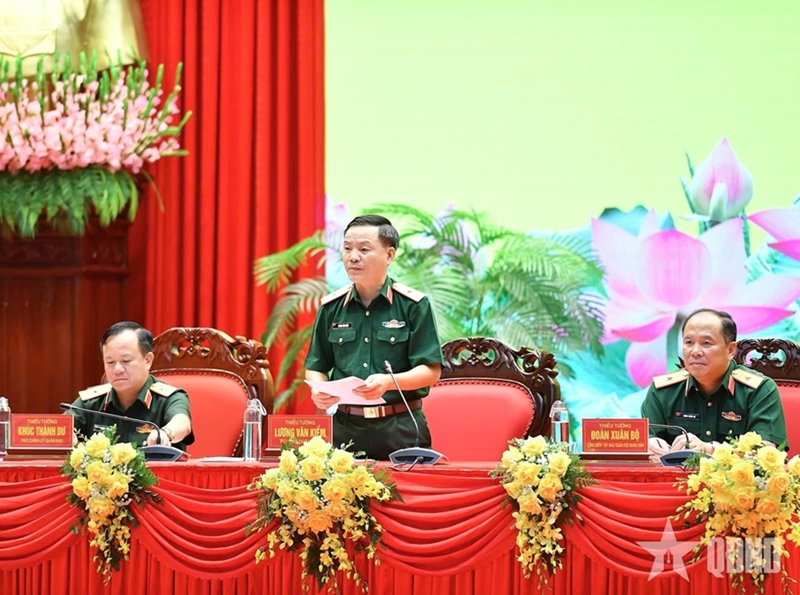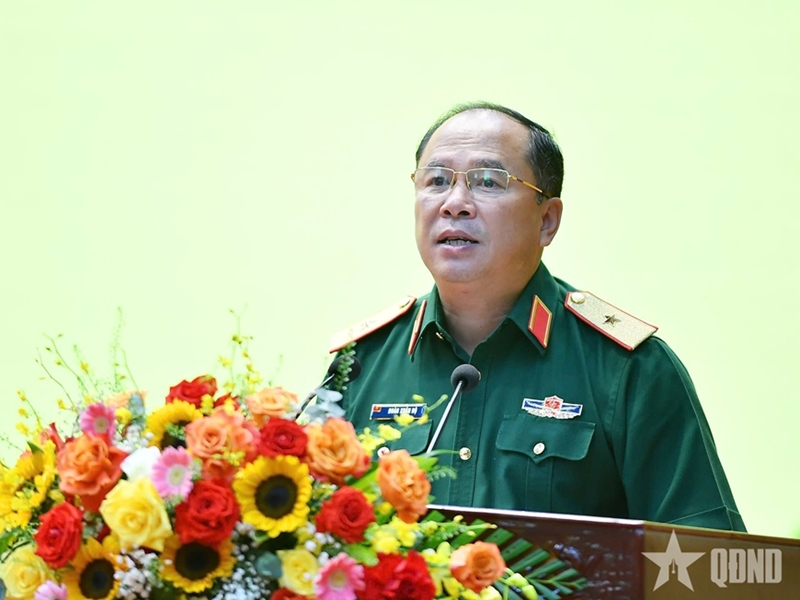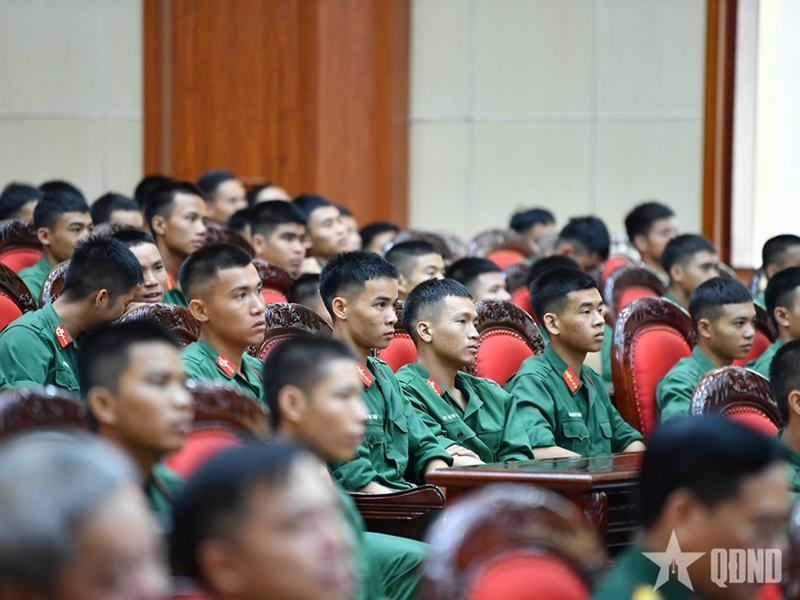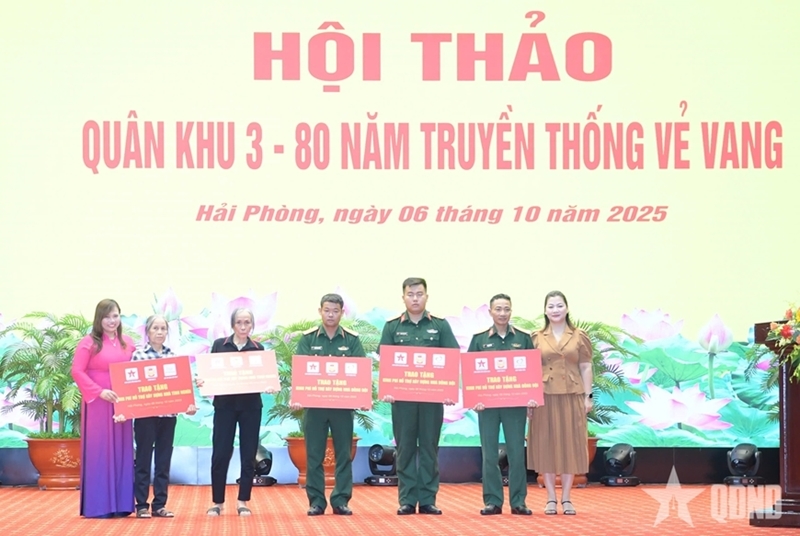The event was attended by former leaders of the General Staff and the General Department of Political Affairs, representatives of ministries, sectors, and localities in the region, along with many generals, researchers, veterans, and historical witnesses.
    |
 |
|
The presidium of the scientific conference |
The presidium comprised MR3 Commander Major General Luong Van Kiem, MR3’s Deputy Political Commissar Major General Khuc Thanh Du, and PAN’s Editor-in-Chief Major General Doan Xuan Bo.
In his opening remarks, Gen. Kiem emphasized that the conference was an occasion to pay tribute and honor the generations of officers and soldiers who bravely fought, sacrificed their lives for the national liberation, construction and defense. It also aimed to confirm great feats-of-arm and accomplishments of the MR3’s armed forces. In addition, it nurtured patriotism, pride, will of independence, self-reliance, resilience and aspirations for peace as well as absolute confidence in the Party’s leadership in the new era.
Delivering a speech, Gen. Bo affirmed that the northeastern region of the country holds a particularly strategic position, having witnessed many historic victories in the nation’s struggles for independence. On October 31, 1945, the Party Central Committee and the Government decided to establish War Zones 2 and 3, the predecessor of present MR3, a landmark event marking the birth and development of the armed forces in this vital area.
    |
 |
|
The PAN’s Editor-in-Chief Major General Doan Xuan Bo speaks at the event. |
During the resistance war against the French colonialists, bravely and creatively, the MR3’s armed forces, together with local people and regular forces, achieved glorious victories such as “Thunder on Route 5,” “Uprising on Route 10,” and “Fiery Cat Bi,” contributing to the historic Dien Bien Phu Victory.
In the resistance war against the U.S. imperialists, MR3 served as a major rear base in the North, providing manpower and supplies to the Southern Theater while directly defending the North, shooting down hundreds of enemy aircraft and destroying numerous warships, contributing to the Great Spring Victory in 1975 that liberated the South and reunified the entire country.
In peace-time, MR3 has successfully fulfilled the military’s three functions as a combat force, a working force, and a production force. Its armed forces have played a key role in building the whole people defense posture coupled with the people’s security posture. Troops have actively engaged in programs such as “Gratitude-paying,” poverty reduction, new-style rural area building, disaster prevention and research and rescue operations, becoming a reliable support for local Party committees, authorities and residents.
    |
 |
|
Participants at the event |
The organizing panel of the conference received 44 presentations from leaders of the Ministry of National Defense, the General Department of Political Affairs, and other central and local agencies, generals, scientists, and veterans. These papers provided comprehensive insights into the development, combat achievements, and contributions of the armed forces of MR3 over the past eight decades.
The conference reaffirmed the position, role, and contributions of Military Region 3’s armed forces to the nation’s revolutionary cause, while drawing valuable lessons for military building, defense consolidation, and national protection and MR3’s armed force building in the new era.
    |
 |
|
Representatives from sponsor organizations give funding to build five houses of comradeship and gratitude. |
On the occasion, the PAN, Vingroup’s Thien Tam Foundation and For Vietnamese Stature Foundation of Bac A Bank presented funding to build five houses of comradeship and gratitude for policy beneficiary families and those in hard living conditions in the MR3 area.
Translated by Mai Huong